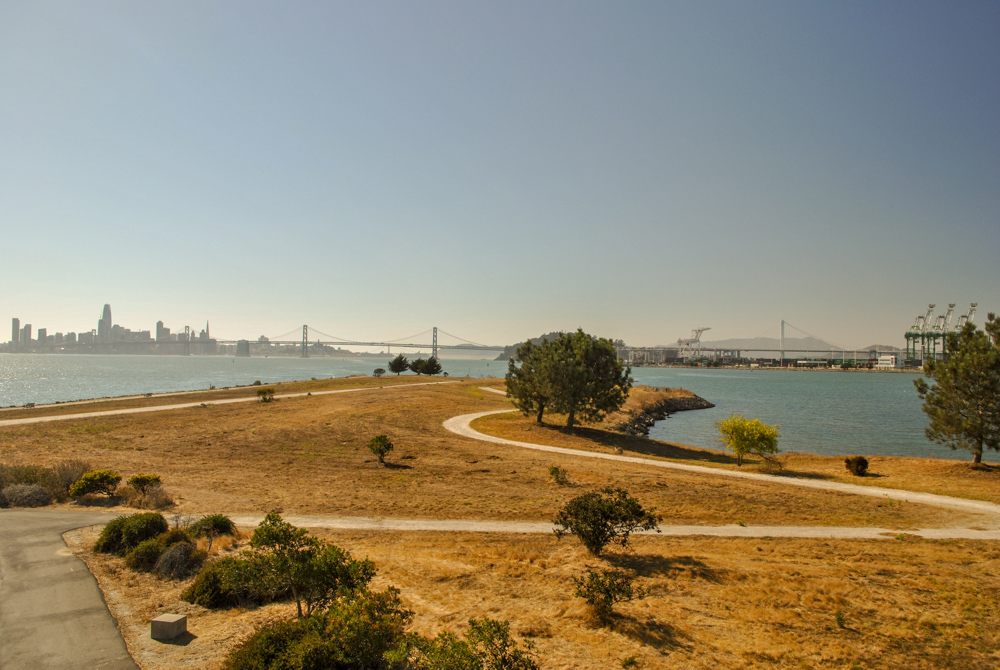2777 Middle Harbor Road, Oakland 94607
In addition to an unusual and interesting view of San Francisco, from here you can watch the work of the Oakland Port unfold:
Climb the viewing towers at the south end or simply look through the fence that separates the park from the port on the east side. As you watch massive shipping containers shuffle, you’ll be witnessing labors that connect back to the origins of the Bay Region. San Francisco expanded beyond gold-rush fever largely because of its potential as a port city, and port labor has been central in global supply chains, and in political organizing.

For example, during the Occupy Wall Street movement, on November 2, 2011, tens of thousands of people marched here from the Occupy Oakland camp downtown. The Oakland Port, which was the fifth most productive in the nation at that time, came to a halt. Protestors had arrived in time to block workers from their shifts, which froze port operations without asking workers to participate in what would have been an illegal work stoppage. While port employees sat in idled cars and trucks outside the gates, protesters filed through the long fingers of the port complex out to the dozens of shipping berths.
The historical rise of the Oakland Port, at the receiving end of the transcontinental railroad, provided the competition and labor pool to fuel the rise of regional industry— eventually surpassing the San Francisco Port. For workers this meant exploitation, but it also brought power: The Bay Area is known for labor successes in part because waterfront workers have leveraged their location in the global production system. Shutting down the port, or even challenging port-management policies here, has thus historically helped improve working conditions more broadly. Occupy Oakland built on this legacy, stalling this behemoth to materially and symbolically draw attention to increasing economic inequality here and around the world. Some protestors walked along rail ties and marched to the very end of the west arm of the port, which extends out about a mile. Others held Occupy assemblies to discuss what would be next for the Occupy movement using the sound-carrying practice of the “people’s mic,” in which declarations are repeated by the crowd multiple times in concentric circles, so that people on the outer ring of the crowd can hear what’s said. Still others climbed up and danced on the immobilized shipping containers, waving signs condemning capitalism. The march was the culmination of what organizers called the Oakland General Strike, and although the strike did not mobilize a true general strike, which would have meant that multiple labor sectors ceased work in solidarity, Oakland’s downtown was nevertheless filled with marches and political theater all day long, until demonstrators flooded out to the port in coordinated waves.
It is not typically possible to get access to the port itself to explore the berths; given the traffic of global goods, port security is high, and the work of moving multi-ton shipping containers from ship to shore is dangerous for workers and visitors alike. You can, however, observe the port from the Middle Harbor Park, which is an interesting place in its own right, with nearly three miles of walking and biking trails and Oakland’s only real beach. The park is a short drive from the West Oakland BART station. Because of traffic and the absence of sidewalks, walking to this park is discouraged; cycling is possible, but requires navigating major freeway intersections with heavy truck traffic. Get there before dusk to access the whole park.